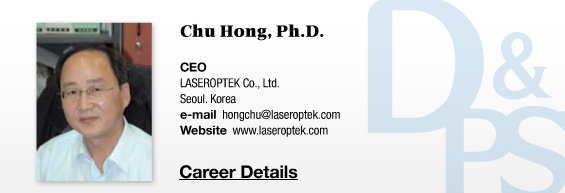After 1989, a Q-switched alexandrite laser (755nm) and Q-switched Nd:YAG laser (1064, 532nm) entered the market of pigmented lesions. The Q-switched Nd:YAG laser got FDA approval for tattoo removal in 1991. These three lasers were all developed based on the concept of selective photothermolysis for the purpose of removing pigmented lesions and tattoos. In other words, for treating pigmented lesions, the pulse duration should be shorter than 1us (10-6 seconds), the thermal relaxation time (TRT) of melanosome. The TRT of a tattoo varies in proportion to the size of ink particles and lasers with the pulse duration of 1-10ns (10-9 seconds) should be used to reduce side effects (burn, hyperpigmentation, etc.) and improve treatment outcome. However, various limitations of these lasers surfaced after extensive clinical research was conducted following FDA approval.
The first limitation was found with tattoo removal. The Q-switched ruby laser caused hypopigmentation even in very clear skin. The Q-switched Nd:YAG laser cannot remove yellow tattoos and causes the skin to darken when used in black tattoos due to oxidation of iron salts. It was discovered that laser was not capable of completely clearing the skin of tattoo ink.
Another limitation was found in treatment of pigmented lesions. After the problems with tattoo removal were discovered, many dermatologists started to become interested in using laser to remove nevus of Ota. In 1994, a clinical study using a Q-switched ruby laser in nevus of Ota reported favorable results.2 Another study followed suit where the Q-switched Nd:YAG laser was used3, leading to a conclusion that epidermal pigmentary disorders such as freckles and lentigines as well as dermal lesions such as nevus of Ota respond well to laser. However, melasma still remained an intractable condition.
When problems began to surface with pigmented lesions and tattoos in the 1990s, using a pulse duration in the femtosecond (10-15 seconds) range, shorter than the nanosecond (10-9 seconds) range, was proposed for tattoo removal. Such continued efforts in research brought about Synosure’s Picosure in 2013. Picosure has a pulse duration in a few hundred ps (picoseconds: 10-12 seconds), about 10-40 times shorter than that of a traditional Q-switched laser and does not induce thermal damage while effectively removing tattoo lesions.
HELIOSⅡ/LOTUSⅡ/HYPERION – Manufacturer: LASEROPTEK(www.laseroptek.com)
Another major breakthrough in Q-switched lasers in the 1990s was the improvement in laser beam profile. In the early days, laser irradiation over the skin was inconsistent due to the Gaussian laser beam profile with an excess energy level in the middle. However, laser manufacturers developed an oscillator using a VRM (Variable Reflection Mirror) as an output coupler and were able to produce a top-hat beam profile. This provided a more consistent irradiation and greatly reduced the risk of burns and other side effects inherent with traditional Q-switched lasers. Research continues on oscillator design for more consistent laser beam profile.
As shown in <Table 1>, Petawatt (1015watt) laser was developed in 1996. Compared to Picosure which previously had the greatest output (109watt), that of Petawatt is about a million times higher. To obtain this level of output, pulse duration is reduced to the femtosecond range. Whether this laser can be useful in dermatology should be determined by further research. Shorter pulse duration means more freedom from thermal damage.
-To be continued-





















